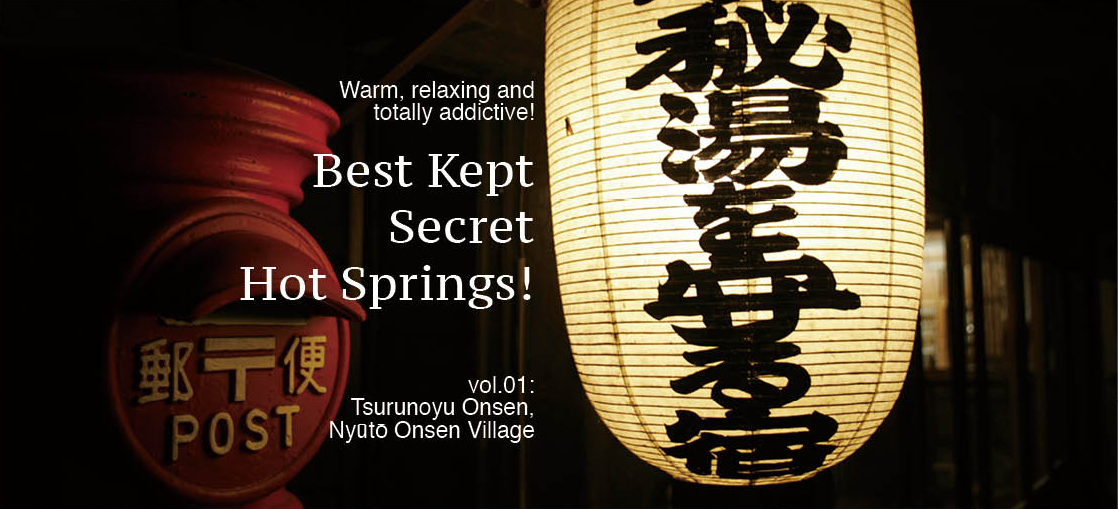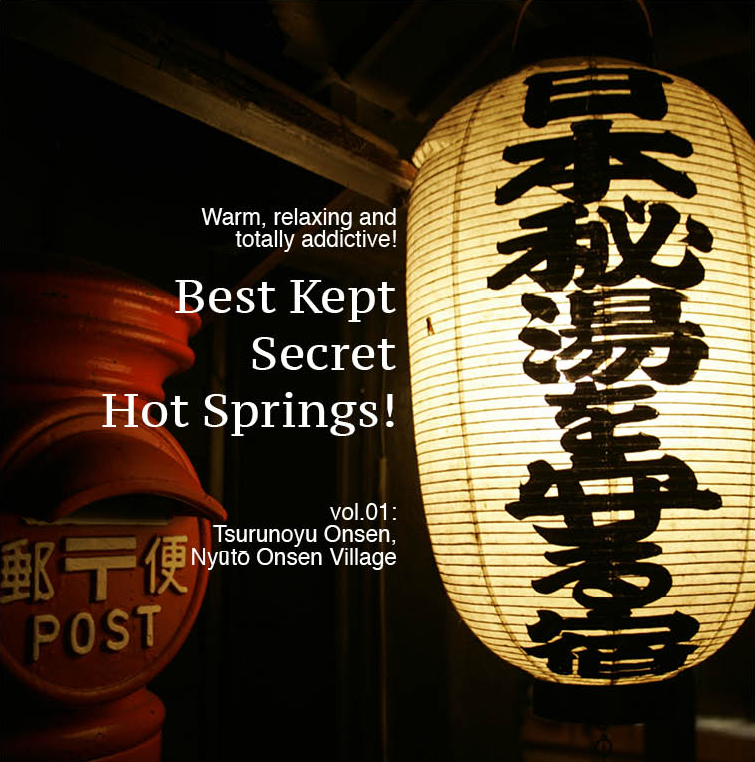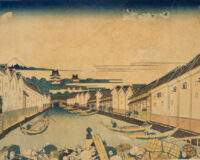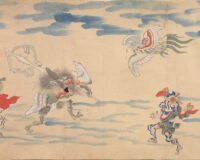

Lanterns hanging beneath the eaves of some of Japan’s more tucked-away hot spring inns proclaim that these establishments belong to the Japan Association of Secluded Hot Spring Inns. Beginning with thirty-three inns in 1975, the association now has a membership of 185 inns. Many of these used to be off the grid, literally; the type of place with no electricity that you might finally reach at the end of a long hike in the mountains. Times have changed though, and there are those who lament that many of these ‘hard-to-reach’ hot springs have become too luxurious! In this series we introduce off-the-beaten-track hot springs that can be enjoyed by people of all ages – onsen inns where the cloudy waters are nature’s very own hospitality.
Text : Sasaki Takashi / Photos : 平島 格 Kaku Hirashima / English Version : Judy Evans
Keyword : Nyūtō Onsen / Senboku City / Akita Prefecture / Northern Japan / Hot Springs / Onsens / Tōhoku / Tsurunoyu
Tsurunoyu Onsen, Nyūtō Onsen Village, Senboku City, Akita Prefecture

Soaking up the gifts of nature at a historical onsen
Tsurunoyu Onsen is one of seven onsen (hot springs), each with its own thermal spring source, scattered throughout Tazawako Highland in Towada Hachimantai National Park. The national park is located in Akita Prefecture, a mountainous prefecture in northern Honshū. Tsurunoyu’s history as a therapeutic spa dates back as far as 1638, when Satake Yoshitaka, the feudal lord of Akita, came to bathe in the healing waters. One of the most fascinating things about Tsurunoyu Onsen is the fact that the inn boasts four different thermal springs. These are variously named shirayu (white springs), kuroyu (black springs), naka no yu (inner springs) and taki no yu (waterfall springs). Each has its own therapeutic properties and each feels different on the skin, so guests can experience four different onsen without ever leaving the inn. From the lush green foliage of spring to snowy winter scenes, the views from the rotenburo (outdoor hot pool) are spectacular.
A visit to Tsurunoyu Onsen isn’t just about soaking in the hot springs; bathers’ stomachs are also well catered to. At dinner time, guests can enjoy local cuisine such as ‘Yamanoimo no Nabe’ (mountain yam hotpot), miso grilled iwana (a type of trout) or sansai (wild mountain greens).
Guests can enjoy soaking up the local history, too. One of the accommodation buildings, the Honjin, was actually built to headquarter the troops who escorted the feudal lord all those years ago when he came to take the waters. From this authentic rustic setting, guests can enjoy a taste of history and a taste of nature’s bounty, while relaxing in the luxury of nature’s own hospitality, the thermal springs that pour forth from the mountain.

Tsurunoyu Onsen, Nyūtō Onsen Village
- Address: Tsurunoyu Onsen, Sendatsuzawa Kokuyūrin 50, Tazawako, Senboku City, Akita Prefecture, Japan 014-1204
- ☎ 0187・46・2139
- Website: http://www.tsurunoyu.com/
- Number of rooms: 30
- Check in: 16:00 / Check out: 10:00
- Accommodation rate per person (including dinner and breakfast): 8,790 yen ~16,350 yen
- Daytime only visit: 600 yen (10:00~15:00)
- Access: Approx. 1 hour from Akita Shinkansen, Tazawako Station by public bus, then shuttle bus.
- Approx. 55 km / 2 hours by car from the Tōhoku Expressway Morioka Interchange.








